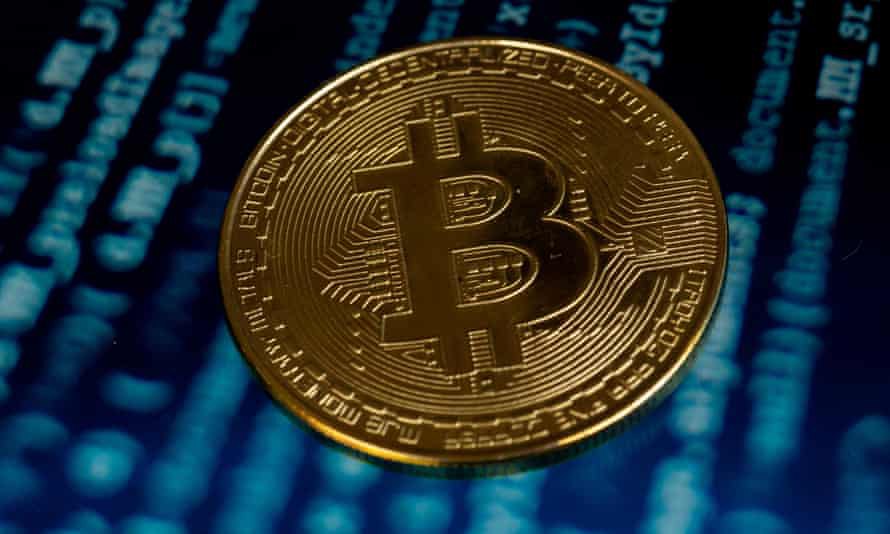Even seasoned financial observers have been intrigued by the meteoric rise of cryptocurrencies, most notably Bitcoin. Bitcoin is akin to a shining star in the vast universe of digital currencies, attracting countless investors and traders worldwide. However, the question that often piques curiosity is: Who sets the price of Bitcoin?
The emergence of Bitcoin in 2009 revolutionized the financial world. It was the first successful implementation of a digital currency utilizing blockchain technology, a transparent, decentralized ledger system. This ingenious innovation challenged traditional banking systems and introduced a new currency valuation and exchange paradigm.
In contrast to fiat currencies, Bitcoin is not controlled by any central authority or government. It operates on a peer-to-peer network, with each transaction recorded in a public ledger known as the blockchain. This decentralized nature of Bitcoin has led to a unique pricing mechanism entirely different from conventional currencies.
How is The Price of Bitcoin Set?
At PlasBit, we believe it is essential to understand how no central authority determines the leading crypto's value when comprehending who sets the price of Bitcoin. Instead, the price of Bitcoin is set by the market. In simpler terms, the value of Bitcoin at any given moment is just the amount that someone is willing to pay for it.
This answer might seem like a vague explanation, but it's pretty accurate. Imagine you're at an auction, and there's a unique piece of art that you're interested in. There's no fixed price for this piece of art. Instead, the final price is decided by how much the highest bidder will pay. This scenario is quite similar to how Bitcoin's price is determined.
However, this doesn't mean Bitcoin's price is purely speculative or random. Numerous factors play a role in influencing Bitcoin's price, leading to its notorious volatility. Understanding these factors is vital in decoding the conundrum of Bitcoin's pricing.
Factors Influencing the Price of Bitcoin
Who sets the price of Bitcoin? Several factors influence Bitcoin's price. These include supply and demand dynamics, market sentiment, regulatory news, technological advancements, and macroeconomic trends. Each of these factors can cause significant fluctuations in Bitcoin's price.
Supply and demand dynamics:
Supply and demand dynamics play a crucial role in determining precisely who sets the price of Bitcoin. The decentralized nature of Bitcoin and its limited supply of 21 million coins contribute to the dynamic relationship between supply and demand.
The rate at which new bitcoins are created slows down gradually on the supply side. This decreasing supply, combined with the finite maximum supply, creates scarcity. As a result, Bitcoin has become more valuable and sought after by investors. Additionally, the cost of production, including infrastructure and electricity, affects the supply side. The higher the production cost, the more inclined miners are to sell their bitcoins at higher prices, reducing the overall supply in the market.
On the demand side, several factors influence the market's interest in Bitcoin. Investor sentiment and confidence in the cryptocurrency market can have a significant impact. Positive media coverage, endorsements from influential figures, and widespread adoption of cryptocurrencies can all drive up demand for Bitcoin. Furthermore, economic and political uncertainty, inflation, and low interest rates can increase demand for alternative assets like Bitcoin, a hedge against traditional financial systems.
The supply and demand interplay ultimately determines who sets the price of Bitcoin. When demand is above supply, the price tends to rise, reflecting the scarcity and value of the cryptocurrency. Conversely, if the supply exceeds demand, the price may decrease due to an oversupply.
Market sentiment:
Market sentiment refers to investors' and traders' overall feelings or attitudes toward a particular market or asset. It is not just who sets the price of Bitcoin but how they feel about it. In the case of Bitcoin, market sentiment can have a significant impact on its price. The crypto market is highly speculative and naturally volatile, and sentiment plays a crucial role in shaping the demand and supply dynamics of Bitcoin.
Positive market sentiment can drive up the price of Bitcoin. When investors are positive regarding the prospects of Bitcoin, they are more likely to buy and hold the cryptocurrency, increasing demand. This increased demand, coupled with limited supply, can push prices higher. Various factors, such as positive news, regulatory developments, widespread adoption, and increased institutional interest can influence positive sentiment. At PlasBit, we provide crypto debit cards alongside traditional payment services such as wire transfers. Heightened user interest in these services is a reflection of positive market sentiment related to crypto adoption in the area of financial services and payments.
Conversely, negative market sentiment can lead to a decline in Bitcoin's price. When investors are pessimistic or fearful, they may sell their Bitcoin holdings, creating a surplus of supply and driving prices down. Negative sentiment can be triggered by factors such as negative news, regulatory crackdowns, security breaches, or concerns about the overall health of the cryptocurrency market.
Market sentiment is often influenced by media coverage. News articles, social media discussions, and influential figures' opinions can shape how investors perceive Bitcoin. Positive or negative media coverage can create a self-fulfilling prophecy, as investors act based on the prevailing sentiment, further amplifying price movements.
Moreover, market sentiment can be influenced by broader economic and geopolitical factors. Investors may turn to Bitcoin as a safe-haven asset, increasing its price during economic uncertainty or financial instability. Conversely, favorable economic conditions or a robust traditional stock market may divert attention and investment away from Bitcoin, leading to a decline in its price.
It is important to note that market sentiment is inherently subjective and can change rapidly. Establishing who sets the price of Bitcoin is influenced by a complex web of factors and can often be irrational. Therefore, our guidance at PlasBit is that investors should exercise caution and conduct thorough research before making investment decisions based on market sentiment alone.
Bitcoin Regulation news:
Regulatory news has a significant impact on the price of Bitcoin. The cryptocurrency market is susceptible to regulatory developments due to its decentralized nature and the potential implications for its use and acceptance. When news of potential regulations or restrictions emerges, it often triggers a reaction in the market, leading to price fluctuations.
Positive regulatory news can have a positive effect on the price of Bitcoin. For example, if a major country or financial institution announces plans to adopt or regulate cryptocurrencies, it can increase investor confidence and attract more institutional investors. This influx of capital can drive up demand and subsequently push the price of Bitcoin higher.
Conversely, negative regulatory news can have a detrimental effect on Bitcoin's price. If a country announces a ban on cryptocurrencies or imposes strict regulations, it can dampen market sentiment and create uncertainty. Investors may become hesitant and start selling their holdings, leading to a decrease in demand and a subsequent drop in Bitcoin's price.
It is essential for investors to closely monitor regulatory news and its potential impact on Bitcoin's price. Keeping up with developments in different jurisdictions and understanding their implications can help investors make informed decisions and manage risk effectively. Additionally, regulatory changes can present opportunities for savvy investors who can anticipate market reactions and position themselves accordingly.
Technological advancements:
Technological advancements have a notable impact on the price of Bitcoin, as they can enhance the functionality, security, and scalability of the cryptocurrency. These advancements can increase demand and investor confidence, leading to an upward price movement.
One critical technological advancement that can affect the price of Bitcoin is the implementation of the Lightning Network. This off-chain scaling solution enables faster and cheaper transactions, making Bitcoin more efficient and user-friendly. As the Lightning Network continues to gain adoption and improve, it can attract more users and businesses to utilize Bitcoin, increasing its demand and, subsequently, its price.
Another technological advancement that can influence the price of Bitcoin is the development of decentralized exchanges (DEXs). DEXs allow users to trade crypto directly from their wallets, eliminating the need for intermediaries and enhancing security. The proliferation of DEXs can increase liquidity and trading volume in the Bitcoin market, leading to a more robust and active market, which can drive the price.
Furthermore, advancements in blockchain technology can have a positive impact on Bitcoin's price. The widespread adoption of blockchain in various industries can increase awareness and acceptance of cryptocurrencies, including Bitcoin. As more companies and governments explore and implement blockchain solutions, it can create a favorable environment for Bitcoin, leading to increased demand and a potential price surge.
However, it is essential to note that technological advancements can also have negative implications for the price of Bitcoin. For example, suppose a significant security vulnerability is discovered in the Bitcoin protocol or a competing cryptocurrency with superior technology gains significant traction. In that case, it can decrease demand for Bitcoin, resulting in a price decline.

Myths and Misconceptions About Bitcoin Pricing
Several myths and misconceptions about Bitcoin pricing often confuse new investors. Our opinion at PlasBit is that it is essential to address these, so we have debunked three of the most popular ones that often arise in a discussion of who sets the price of Bitcoin.
Bitcoin has no intrinsic value:
One common myth is that Bitcoin has no intrinsic value because a physical commodity does not back it. However, this perspective fails to understand that value is subjective and not purely determined by physicality. Bitcoin derives its value from its decentralized nature, limited supply, and utility as a medium of exchange. It's a digital asset that offers an alternative to traditional financial systems. It's widely used for transactions, especially in countries with unstable economies. Furthermore, its underlying blockchain technology is revered for its potential to revolutionize industries, from finance to supply chain management.
A small group of "whale" investors control the price:
Another misconception is that a small group of "whale" investors set the price of Bitcoin and, therefore, manipulated the Bitcoin market. While it's true that large holders can influence market trends due to their significant holdings, it's not accurate to suggest that they entirely control the price. Bitcoin's market is global and highly fragmented, with millions of participants spread across many crypto wallets. Therefore, the market movements are a cumulative result of the actions of all traders, not just the whales. Additionally, institutional investors have increasingly diversified the market, reducing the potential impact of individual whales.
Governments control the price of Bitcoin:
Who sets the price of Bitcoin? For many, there's a belief that governments control the price of Bitcoin. This idea is a misconception because Bitcoin operates on a decentralized network, which means it's not subject to direct government control. While regulatory policies can indirectly influence market sentiment, they do not directly control Bitcoin's price. For example, a government's decision to ban or regulate Bitcoin can lead to short-term price fluctuations. Still, the long-term price is determined by broader market factors like supply and demand, technological advancements, and macroeconomic trends.
Understanding these misconceptions about Bitcoin pricing can help investors make more informed decisions about who sets the price of Bitcoin. Various factors, including market demand, technological advancements, regulatory environment, and global economic conditions influence Bitcoin's price. Investors need to understand these dynamics rather than hold onto myths and misconceptions.
Crypto Price Tracking Tools
Once you have comprehended the question of who sets the price of Bitcoin, it is essential to check the price regularly. At PlasBit, we provide a range of tools and widgets to help you do this, including a pricer ticker, coin list, and crypto historical price calculator.
Price Ticker:
The price ticker is a real-time tool that constantly updates the current price of Bitcoin and other cryptocurrencies. This tool helps investors and traders closely monitor the volatile crypto market. It also provides data on percentage changes over different time intervals, allowing users to understand the market's current direction and momentum.
Coin List:
The coin list is a comprehensive tool that provides a list of all available cryptocurrencies, complete with their current prices, market capitalization, volume, and percentage change in price over the last 24 hours. This tool makes comparing cryptocurrencies easier and making informed investment decisions based on market performance.
Crypto Historical Price Calculator:
This tool allows users to view the historical price data of any cryptocurrency, including Bitcoin. The crypto historical price calculator helps identify long-term trends and patterns in a cryptocurrency's price. It can help investors understand how a cryptocurrency's price has changed over time and predict future price movements based on past performance.
These tools we provide at PlasBit are designed to give investors the information to track crypto prices effectively. These tools allow investors to stay updated on the latest price changes, compare cryptocurrencies, and understand historical price trends. This approach can lead to more informed investment decisions and potentially higher returns, regardless of who sets the price of Bitcoin.
Unraveling the Complexity of Bitcoin Pricing
At PlasBit, we acknowledge that decoding the conundrum of Bitcoin pricing isn't a simple task. It involves understanding various market forces and participants, each playing a unique role. However, the key takeaway is that no single entity sets the price of Bitcoin. Instead, its price is determined by a collective outcome of numerous market forces and participants.
As consumers, we play an essential role in this process. Our buying and selling decisions and our perception and sentiment toward Bitcoin directly influence its price. Therefore, staying informed about the latest developments in the crypto world is crucial, as these can significantly impact Bitcoin's price.
The question of who sets the price of Bitcoin doesn't have a simple answer. It's a complex and dynamic process, influenced by many factors. But one thing is sure - understanding these factors can help us make informed decisions and navigate the volatile world of Bitcoin.







